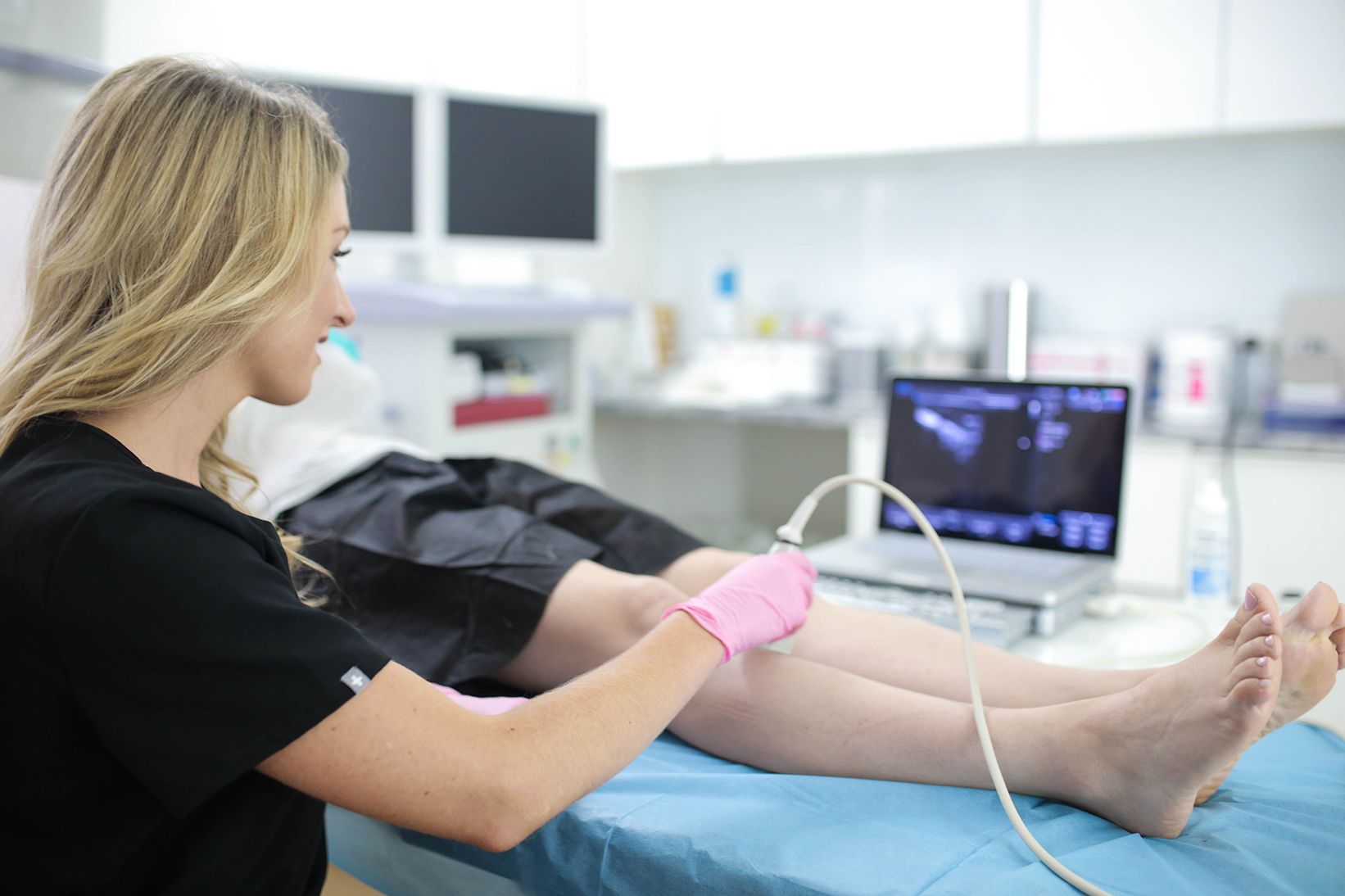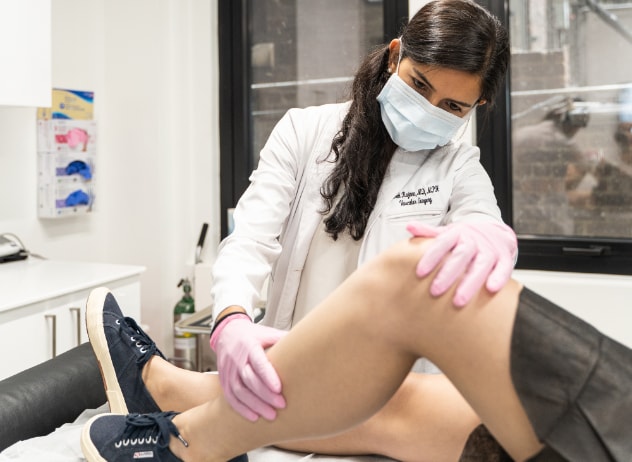The Spider Vein and Varicose Vein Center, NJ
Chronic venous insufficiency, the root cause of spider veins, varicose veins, and most other vein problems, is an extremely common condition. It affects millions of Americans every year, and it’s particularly common amongst females and older individuals. However, despite being extremely common, chronic venous insufficiency is one of the most underdiagnosed conditions. Most patients allow vein disease to persist undetected for years until it eventually leads to advanced complications necessitating immediate treatment.

The lack of awareness about vein disease can be attributed to the abundance of false information online. Most people assume that spider veins and varicose veins are harmless cosmetic problems with no long-term health consequences. However, in actuality, spider veins and varicose veins are often symptomatic of underlying chronic venous insufficiency, a dangerous circulatory disorder. Many patients also assume they can treat spider veins with topical creams, apple cider vinegar, and other at-home remedies — that’s simply untrue.
The Spider Vein and Varicose Vein Center in NJ has treated thousands of patients with different types of vein diseases. We have offices in three accessible locations in New Jersey — Clifton, Paramus, and Woodland Park. We believe everyone should have access to accurate information about vein disease because that empowers you to seek treatments in a timely manner before the situation worsens. That’s our goal with this article — spreading awareness about vein disease.
If you have spider veins, varicose veins, or other signs and symptoms of vein disease, please consult our board-certified vein doctors for more information today.

What are spider veins and varicose veins?
Spider veins are dense clusters of reddish or bluish blood vessels that appear just underneath the skin’s surface. They look like a dense mass of spider webs spreading outwards from a central location. Varicose veins are dense masses of blood vessels that protrude out of the skin’s surface, looking like twisted, tangled, and knotted ropes. They might be bluish, reddish, greenish, or skin-colored, and they usually appear on the lower extremities of the body.
What causes bulging leg veins?
Chronic venous insufficiency is the primary root cause of bulging leg veins, aka varicose veins. Venous insufficiency is a medical condition wherein the vein valves, usually responsible for facilitating one-way blood circulation to the heart, collapse or malfunction. When vein valves malfunction, gravity forces blood to flow backward and accumulate in the leg veins, leading to vascular dilation and bulging leg veins.
What are the signs that I should consult a vein doctor?
You should consult a vein doctor when you notice the signs and symptoms of vein disease: leg heaviness, frequent leg cramps, restless leg syndrome, leg swelling, skin discoloration, and spider veins. If you don’t seek treatment, the symptoms of vein disease will continue worsening until you experience profuse bleeding because of excessively dilated varicose veins, leg ulcers because of poorly healing wounds, and blood clots in the leg veins (deep vein thrombosis).
Can you treat varicose veins with creams?
Varicose veins are dilated blood vessels that bulge out of the skin’s surface because of the accumulation of blood in leg veins, which, in turn, is caused by malfunctioning vein valves. Varicose veins aren’t cosmetic skin problems — they’re vascular problems caused by a circulatory disorder. As such, you can’t treat varicose veins with creams, ointments, and topical products — you must seek medical treatments to have them removed.
Does exercise help with varicose veins?
Yes, exercise helps with varicose veins, especially cardiovascular exercises that increase blood circulation and work your calf muscles, such as running, swimming, and cycling. These cardiovascular exercises increase blood circulation in your leg veins, leading to improved blood flow towards the heart. They also engage your calf muscles, thereby pushing the accumulated blood towards the heart. As such, exercise can improve the symptoms of varicose veins, but it can’t treat the root cause.
Do I need surgeries for varicose veins?
No, you don’t need surgeries for varicose veins. In the past, varicose veins could only be treated using surgical procedures, such as vein ligation and venous bypass surgery. However, thanks to recent advancements in technology and vein medicine, we can now treat varicose veins using minimally invasive procedures. Thanks to procedures like radiofrequency ablation and endovenous laser ablation, you don’t need anything more invasive than a small incision on the skin’s surface.
What are my varicose vein treatment options?
Radiofrequency ablation, endovenous laser ablation, and venaseal are some of the most common and popular minimally invasive varicose vein treatment options. During these procedures, the vein doctor channels thermal energy, laser energy, and medical adhesives into the diseased saphenous vein to make them collapse. The accumulated blood reroutes into healthier leg veins, restoring effective blood circulation to the heart. After the primary vein treatment, the vein doctor may recommend ambulatory phlebectomy or sclerotherapy to remove the superficial varicose veins and spider veins.
Do vein treatments involve downtime?
No, minimally invasive spider vein and varicose vein treatments don’t involve downtime. You may have to avoid strenuous physical activities, such as heavy lifting, for a few days, but you can resume most of your daily activities and work immediately.
Why do I have to wear compression stockings?
You have to wear compression stockings after your vein treatment to prevent blood accumulation in the leg veins. Compression stockings apply pressure on the leg veins, forcing blood to flow towards the heart. You may have to wear compression stockings for a few weeks after your vein treatment.









